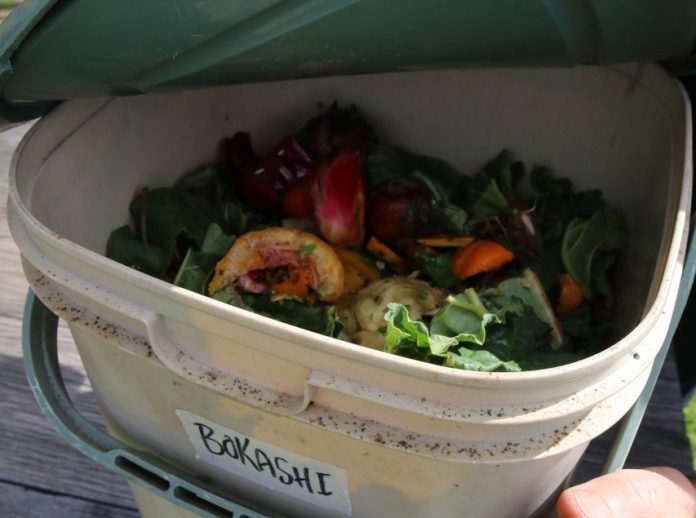Do you know that feeling, everyone is talking about some ‘amazing’ thing, and you are left wondering “am I missing something here?”. That’s me and bokashi.
Bokashi is a system for processing kitchen scraps that is presented as a convenient, odour-free alternative to composting or worm farming.
We need a bokashi bucket – with a well-sealing lid, a grate in the bottom and a tap for the liquid – and some bokashi ‘bran’, a proprietary source of what are sold as ‘effective microorganisms’ or ‘EM’.
Food scraps go into the bucket, bokashi bran is sprinkled to inoculate with the EM and the lid is sealed tight. In this low-oxygen environment, anaerobic microbes will start to pickle the food scraps.
Sounds simple enough, but there are a few things to consider.
Firstly, the lid needs to stay on most of the time to maintain the low-oxygen conditions for the pickling process to work, so we can’t be adding food scraps regularly. Some sources suggest keeping a kitchen caddy for collecting food scraps in, or even a second bokashi bin, so we only add to the active bokashi bucket every few days.
Secondly, if we follow the instructions, we are going to have to keep buying and sprinkling the bokashi ‘bran’. There are ‘make your own’ recipes out there (whey or sauerkraut liquid should also work) but this is yet another step in this ‘convenient’ process.
Thirdly, if bokashi smells like many lactic acid pickles then the claim of ‘odour-free’ might be a little… overstated. In my experience, bokashi smells go from reasonably benign, through to pretty awful. The juice tapped off the bottom is quite pungent, and needs to be emptied regularly, diluted with water, and used as a liquid fertiliser.
Fourthly, pickling is a great way to preserve food and extend its shelf life, but by pickling our food scraps we have not got rid of them, or even reduced them much, so we still have a bucket of – now pickled – food scraps, with stinky juice at the bottom to ‘deal with’.
After two weeks of pickling, we are told we can bury the bokashi contents in the garden or add them to a compost pile. So, for bokashi to work, we still need an active compost pile or garden space – or access to either – to put the pickled food scraps into.
Advocates say that pre-pickling helps food scraps break down faster, but if our compost is going well, fast decomposition is not usually a problem. Going through the whole bokashi process does seem like a lot of extra work for a slightly faster decomposition.
The most appropriate place for bokashi might be in flats and apartments where food scraps need to be stored before being taken out to a central compost or garden every few weeks.
Perhaps you have had some experience – positive or not – with bokashi. We are keen to hear about it.
– Joel Meadows works with *Yes In My Back Yard, (YIMBY), a community-scale composting initiative in Castlemaine and surrounds. Send questions or comments to hello@yimbycompost.com, or to book in for a compost workshop.







